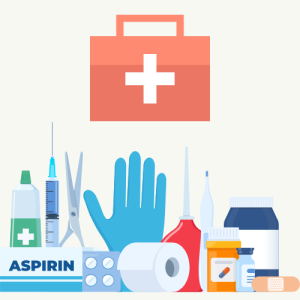On this page: Background | Educational Resources | Setting-Specific Resources

Background
Wounds can be a way for germs to get into the body because the skin’s natural barrier of protection is damaged. Wounds can also be a place for germs to live. Wound care (any activity that helps heal the breaks in the skin) can be a way to easily transmit germs if appropriate infection control precautions are not followed.
Examples of ways germs have been transmitted with wound care:
- Not cleaning hands at the right times
- Be sure to clean hands before and after wound care
- Be sure to clean hands before putting on new gloves and after removing them
- Not wearing personal protective equipment correctly
- Do not reuse gloves
- Be sure to change gloves when going from clean to dirty tasks
- Wear a mask when performing wound care:
- When there are splashes or sprays
- During a Group A Streptococcus outbreak
- Not using multi-use ointments correctly
- These ointments should be dedicated to a single person
- They should not be taken to room to room and then put back into storage with clean supplies
- Not cleaning, disinfecting, or sterilizing shared equipment following manufacturer’s instructions
- Not cleaning and disinfecting the environment after contamination from splashes or sprays from wounds that are infected or colonized with germs
Educational Resources
- Infection Prevention and Control During Wound Care Procedures: Three-Part Video Series
- Part 1: Wound Care Infection Risks and Your Infection Prevention Program (Video; PDF; Transcript)
- Part 2: Standard Precautions for Wound Care (Video; PDF; Transcript)
- Part 3: Use of Transmission-Based and Enhanced Barrier Precautions for Wound Care (Video; PDF; Transcript)
- Wound Care Infection Prevention and Control Tool
- Sign: Standard and Transmission-Based Precautions
- Hand Hygiene
- Infection Control Precautions
- Infection Prevention and Control
VDH Infection Prevention and Control Assessments: The HAI/AR team is available to conduct a no-cost, non-regulatory, onsite visit to help a facility identify its infection prevention strengths and areas of opportunity.
- Core Infection Prevention and Control Practices for Safe Healthcare Delivery in All Settings
- Enhanced Barrier Precautions website
- Guideline for Isolation Precautions: Preventing Transmission of Infectious Agents in Healthcare Settings (2007)
- Standard Precautions for All Patient Care
- Wound Care Infection Control Assessment Tool
Association for Professionals in Infection Control and Epidemiology /Wound, Ostomy, and Continence Nurses Society
Virginia Healthcare-Associated Infections Advisory Group
- Virginia Infection Prevention & Control Training Alliance (VIPTA) – search the education and training resource library for resources related to wound care
VCU Virginia Infection Prevention Training Center
- Virginia Infection Prevention Training Center (VIPTC) - courses and trainings related to infection prevention and control
Setting-Specific Resources
Nursing Homes
- VDH Quick Guide for Nursing Home Infection Preventionists: Wound Care

